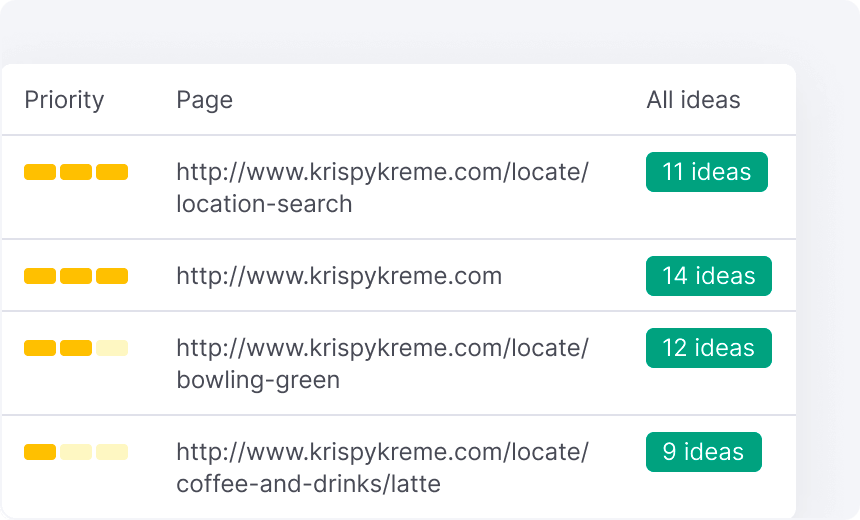Unveiling the Unconventional Mediums in Google Analytics Beyond Default Setups
In the realm of digital analytics, Google Analytics stands as a cornerstone for companies seeking to understand their online presence. By venturing past the surface area and delving right into the details of social media data, e-mail campaign performance, reference web traffic resources, straight website traffic patterns, and custom-made network groupings, a treasure chest of info awaits those ready to embrace a much more nuanced strategy.

Leveraging Social Network Insights
Occasionally overlooked, yet greatly important, is the technique of leveraging social media sites insights within the realm of Google Analytics. By incorporating data from systems like Facebook, Twitter, Instagram, and LinkedIn right into Google Analytics, companies can get a deeper understanding of their target market and the effectiveness of their social media sites campaigns.
Via this assimilation, marketers can examine and track individual actions on their web site that originates from social networks platforms. They can identify which social networks channels are driving one of the most traffic, which material is resonating with the audience, and which campaigns are converting the most leads. This insight permits data-driven decisions to maximize social media sites strategies and boost general advertising performance.
In addition, by incorporating social networks insights with Google Analytics, businesses can develop extra targeted and individualized projects - what is not considered a default medium in google analytics. They can use demographic information, passions, and online habits collected from social networks to fine-tune their audience segmentation and supply tailored messages that reverberate with particular customer teams. This targeted approach can result in higher engagement, enhanced conversions, and ultimately, enhanced return on financial investment
Uncovering Email Campaign Performance
Discovering Email Project Performance involves evaluating key metrics and performance indicators to evaluate the performance of email marketing initiatives. When delving right into e-mail project performance, it is crucial to assess metrics such as open prices, click-through prices, conversion prices, and unsubscribe prices. Open up rates show the percent of receivers that opened up the e-mail, giving understanding into the efficiency of subject lines and sender names. Click-through rates measure the percent of receivers who clicked on links within the e-mail, revealing involvement degrees. Conversion rates track the portion of receivers who completed a wanted activity after clicking on a web link in the e-mail, such as buying or signing up for an e-newsletter. Lastly, unsubscribe rates highlight the variety of recipients that pulled out of receiving more emails, losing light on email material top quality and relevance. By analyzing these metrics, marketing professionals can fine-tune their e-mail advocate far better interaction and efficiency.
Analyzing Reference Web Traffic Sources
After assessing the efficiency of email projects via vital metrics such as open rates and conversion prices, the following critical step is assessing recommendation website traffic resources in Google Analytics to understand where site visitors are coming from and just how they interact with the website. Reference web traffic sources describe the internet sites that guide users to your site with clickable links. By delving right into this data, organizations can gain understandings into which outside platforms are driving traffic to their website, whether it be social networks systems, partner websites, or on the internet directories.
It aids services recognize high-performing recommendation resources that contribute considerably to web site web traffic and conversions. Google Analytics uses thorough reports on recommendation web traffic, allowing services to track the performance of each referral resource properly and make data-driven decisions to improve their online presence.
Exploring Direct Website Traffic Patterns
Discovering the direct website traffic patterns in Google Analytics gives useful understandings into user habits and the efficiency of projects - what is not considered a default medium in google analytics. Direct traffic describes site visitors who come down on a web site by straight typing the URL right into their web browser, utilizing bookmarks, or clicking on untagged web links. Comprehending straight website traffic patterns can aid marketing professionals examine the impact of offline marketing efforts, brand acknowledgment, and the performance of word-of-mouth references
By diving into straight web traffic information, organizations can reveal important information regarding customer intent and brand loyalty. Assessing the habits of direct visitors, such as the web pages they check out, the moment invested on website, and the conversion rate, can give a much deeper understanding of individual interaction and the total performance of the internet site in converting site visitors into clients.
Additionally, tracking direct web traffic patterns with time allows services to determine fads, seasonality results, and the success of details projects or promos in driving straight brows through. This info can then be used to improve marketing approaches, maximize website see it here web content, and boost the total customer experience to optimize conversions.
Utilizing Custom Channel Groupings
Utilizing custom-made channel collections in Google Analytics permits businesses to classify and assess their site traffic based on particular requirements, giving useful insights for optimizing advertising methods. Personalized channel groups enable business to develop their very own customized groups of traffic resources, such as social networks, organic search, e-mail campaigns, and recommendation website traffic. By specifying these groups, services can get a deeper understanding of exactly how various advertising networks add to their internet site web traffic and conversions.
This attribute is particularly beneficial for businesses with varied marketing strategies across numerous platforms. For instance, a company running both paid and natural social media projects can distinguish between the two to analyze their specific performance properly. In addition, custom channel groupings can assist this post determine any type of ignored or ignored website traffic sources that may be driving important engagement.
Conclusion

By venturing beyond the surface and delving into the ins and outs of social media data, e-mail project performance, recommendation web traffic sources, straight web traffic patterns, and custom channel groupings, a treasure trove of information waits for those prepared to accept an extra nuanced strategy. They can identify which social media networks are driving the most traffic, which web content is resonating with the audience, and which projects are transforming the most leads.After assessing the performance of e-mail projects with vital metrics such as open prices and conversion rates, the following important action is assessing referral web traffic sources in Google Analytics to understand where web site visitors are coming from and how they interact with the like this site. Customized network groupings allow companies to create their own tailored groups of web traffic sources, such as social media, organic search, e-mail projects, and referral website traffic. By leveraging social media understandings, discovering email project efficiency, analyzing recommendation web traffic sources, exploring direct web traffic patterns, and utilizing customized channel groupings, marketing experts can gain important insights right into their on the internet existence.